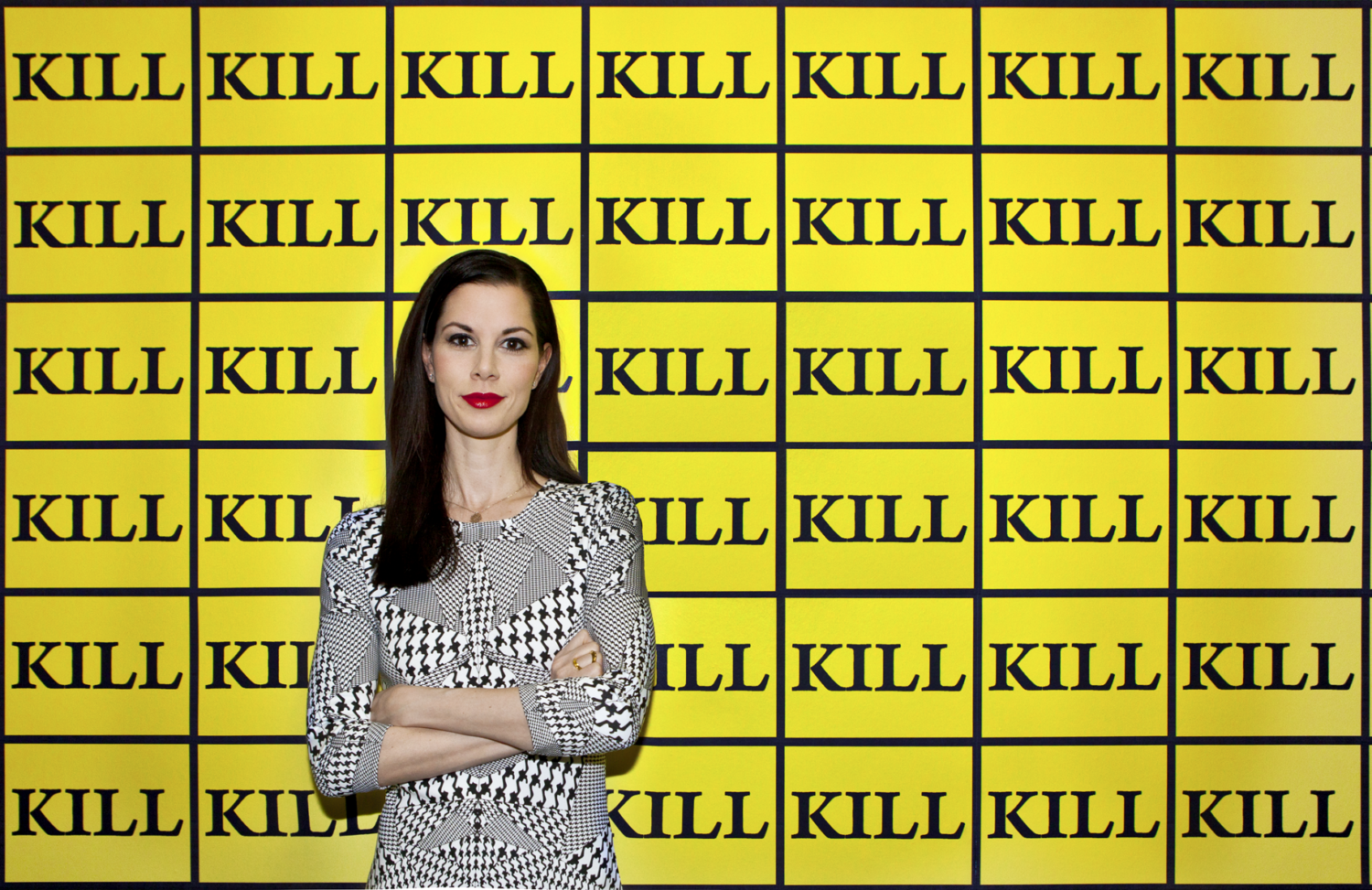
This month, the Julia Stoschek Collection in Dusseldorf is celebrating its 10th anniversary with an exhibition curated by the acclaimed young artist Ed Atkins. Gathering a total of 49 works, the show illustrates a history of the genre of time-based media art, from the 1950s to today. Its title, “Generation Loss,” refers to the reduction of quality that results from copying analog or digital data; but data loss is also used as an analogy for social change.
Stoschek told artnet News that she and Atkins first began a dialogue in 2013, when exhibition of his work was staged at her collection, and that “Generation Loss” could be seen as a result of that relationship. The show reflects on the changes the world has seen in the ten years since she first opened her collection to the public.
“Seen from a historical perspective 10 years is a very short period of time—but looking back it’s clear that the age in which we now live is characterized by a dynamism that can make your head spin. Ed Atkins focuses on the central question of how the moving image or our image realities have changed under the influence of ever-changing technologies,” Stoschek said.
Atkins chose to install works from different decades together, organized into groups and not based on historical time.
“[He] has chosen a way to confront the collection’s historicity… In doing so, he is drawing out both the tacit interrelationships of the collection, and also the ways in which generations of artists and technologies inherit, lose, change, and corrupt their precursors,” the collector explained.
To celebrate the opening of “Generation Loss,” which will be on view from June 10, 2017 to July 10, 2018, in Dusseldorf, artnet News asked Stoschek to choose one artwork from each decade from the 1950s to the 2010s.
See below her selections in chronological order, and why these works matter, in her own words:
Still from Jack Smith’s Overstimulated. Courtesy Julia Stoschek Collection.
Jack Smith, Overstimulated (1959-63)
“Smith can be credited to a certain extent with a unique characteristic: set apart from the art scene in the 1960s, he is a kind of exceptional figure; almost no other artist rejected the conformity and conventionality of society as he did. He was celebrated as a modern dandy of eccentricity, absurdity, and exoticism—though only by the underground, at first.”
Still from Chris Burden’s TV Commercials. Courtesy Julia Stoschek Collection
Chris Burden, The T.V. Commercials (1973-77)
“The TV Commercials is a recent compilation of Burden’s four legendary television interventions, which date from 1973 to 1977. For each of these conceptual projects, Burden purchased commercial time on broadcast television and aired his own subversive ads. Within the context of ‘Generation Loss,’ this work is a work of punk. It marks a change in the perception of artists’ moving image.”
Still from Klaus vom Bruch’s Alliertenband courtesy Julia Stoschek Collection
Klaus vom Bruch, Alliiertenband (1982)
“German artist Klaus vom Bruch engages in a provocative analysis of personal and national identity in relation to cultural mythology and history. Vom Bruch constructs rhythmic, repetitive confrontations between the self and collective memory, presented as a theater of appropriated media images from television advertising, Hollywood cinema, and military archival films.”
Still from Barbara Hammer’s Sanctus. Courtesy Julia Stoschek Collection
Barbara Hammer, Sanctus (1990)
“Sanctus by Barbara Hammer is a film of the rephotographed moving x-rays originally shot by Dr. James Sibley Watson and his colleagues. Making the invisible visible, the film reveals the skeletal structure of the human body as it protects the hidden fragility of interior organ systems. Sanctus portrays a body in need of protection on a polluted planet where immune system disorders proliferate.”
Still from Johanna Billing’s Project for a Revolution courtesy Julia Stoschek Collection
Johanna Billing, Project for a Revolution (2000)
“Billing’s piece is made in reference to the introductory sequence of Antonioni’s film Zabriskie Point (1969) that shows revolutionary debate among students and a ‘call to arms’ in a university. With this reference, Billing stages a comparison between the expressive turmoil of opposition to military violence in the USA during the Vietnam war period and the ‘safe’ haven’ of the Scandinavian welfare state of the late 1990s. The piece moves between the interior of two educational institutions: one close to clashes of violence, the other infused with security and between two international groups of students; one that is boiling with the search for arguments, accusations and reconciliations, while the other is submerged in lethargic consensual silence.”
Still from Hannah Black’s Bodybuilding. Courtesy Julia Stoschek Collection
Hannah Black, Bodybuilding (2015)
“Anyone who examines the work of Hannah Black is simultaneously confronted with their own physicality. Her videos and texts work like large-scale mirrors and reflect our own social and societal development. The artist and writer, who lives in Berlin, is primarily interested in focusing on the human body as a response to social and political structures and their surprising encounters, which lead to identity formation. She follows a postmodern physical tradition, according to which no physical body exists in a natural form, but rather is always bound up in social processes.”
“Generation Loss,” curated by Ed Atkins is on view at the Julia Stoschek Collection, Dusseldorf, from June 10, 2017 – July 10, 2018.